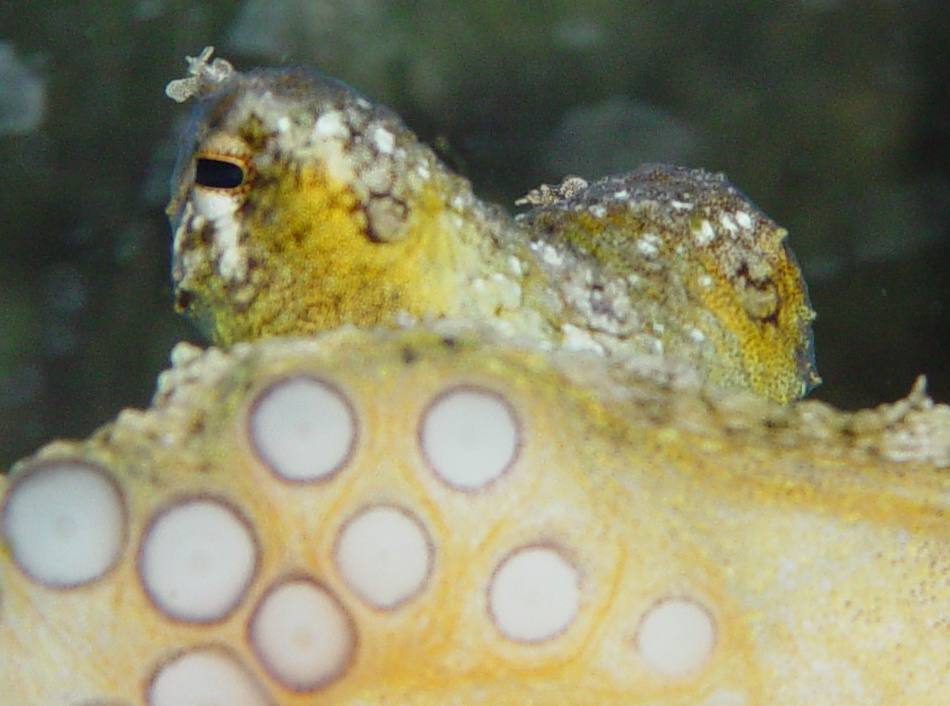I have always been fascinated by octopuses: how could one not be? Between their virtually boneless bodies, their graceful locomotion, and their ability to change their skin color in a fraction of a second, they're as close to other-worldly as one can get on earth.
I first wanted a pet octopus perhaps 20 years ago, and even acquired a salt water fish tank, but the retailers I met in the Philadelphia area were unable to provide me with a specimen.
Once I had the reef tank set up, I did manage to purchase a small, nocturnal octopus, but it was not a satisfactory pet. At some point, looking around online, I discovered some places that seemed to always have octopuses available, so I tried one.
Identification of octopus species is not that difficult for the expert, but one often receives a species that is not what one ordered. I'm pretty sure that was the case for the first few octopuses I had.
This is the start of a number of pages of octopus pictures: if you wish to, you can skip straight to the octopus movies
In this picture, notice the textured skin colors and the graceful arms.

When the same picture is magnified, you can clearly see that the skin itself is also textured: notice the raised tufts above his eyes, below his eyes, on the "shoulder" below his head, and on the mantle to the left of his head.

The texture is even more evident in this picture:

The possible color variations are obvious here, with the starkly white arms and the darker mantle

The skin texture remains obvious in this picture. The siphon is just below and to the right of the eye: the white rings on the right are arm suckers bulging out from a circularly wrapped arm.

The graceful patterns of the arms and suckers on the glass are always interesting.

The slit-shaped eyes and white-to-yellow-to-brown skin colors are obvious. The tiny brown dots are individual "chromatophores", the basic elements of pigment that the creatures use to control their skin colors. Each chromatophore consists of a small sack of ink with an annular muscle that can expand or contract to show or hide the pigment.

The tiny chromatophores are much more obvious in this next picture, as is the tuft above the right eye. Notice the white stripe down the middle of the mantle, along with the dark brown stripe, and the mottled yellows.

More Octopus